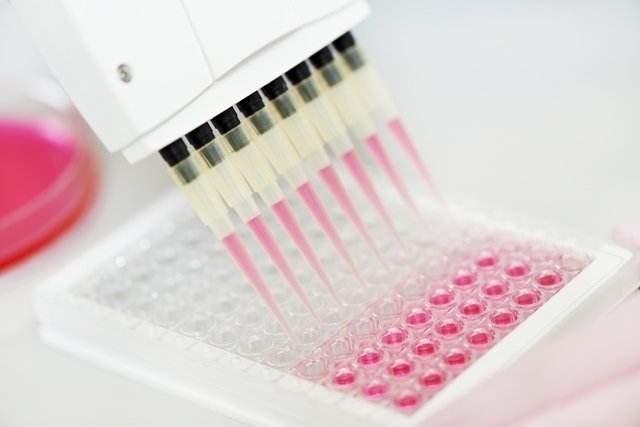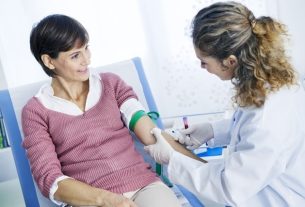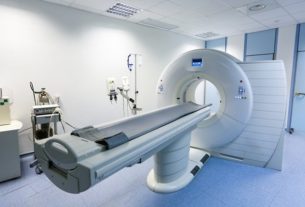The anti hbs test is requested to check whether the person has immunity against the hepatitis B virus, whether acquired through vaccination or through a cure for the disease. This test is carried out by analyzing a small blood sample in which the amount of antibodies against the hepatitis B virus is checked in the bloodstream.
Normally the anti-hbs test is requested together with the HBsAg test, which is the test in which the presence of the virus in the blood is verified, and is therefore used for diagnosis.
Thus, after evaluating anti-hbs levels, the doctor can confirm the infection, especially if there are symptoms of infection, and thus indicate the most appropriate treatment, which normally involves rest, light nutrition and use of medication, in some cases . Learn more about hepatitis B.

What is it for
The anti hbs test serves to evaluate the production of antibodies by the body against a protein present on the surface of the hepatitis B virus, HBsAg. Thus, through the anti-hbs test, the doctor can check whether or not the person has been immunized against hepatitis B, through vaccination, in addition to checking whether the treatment is effective or there has been a cure, when the diagnosis for hepatitis B has been made. confirmed.
HBsAg exam
While the anti-hbs test is requested with the aim of checking immunity and response to treatment, the HBsAg test is requested by the doctor to find out if the person is infected or has had contact with the hepatitis B virus. test is required to diagnose hepatitis B. Find out more about the HBsAg test.
HBsAg is a protein present on the surface of the hepatitis B virus and is useful for diagnosing acute, recent or chronic hepatitis B. Normally the HBsAg test is requested together with the anti-hbs test, as this way it is possible to check whether the virus is circulating in the bloodstream and whether the organism is acting on it. When a person has hepatitis B, the report shows HBsAg reagent, and the result is important for the doctor, as this allows treatment to begin. Understand how hepatitis B is treated.
How is done
To take the anti-hbs test, no type of preparation or fasting is necessary and it is done by collecting a small blood sample, which is sent to the laboratory for analysis.
In the laboratory, the blood goes through a serological analysis process, in which the presence of specific antibodies against the hepatitis B virus is verified. These antibodies are formed after coming into contact with the virus or due to vaccination, in which the organism is stimulated to produce these antibodies, giving the person immunity for the rest of their life.
Find out when the hepatitis B vaccine should be taken.
How to understand the results
The result of the anti-hbs test varies according to the concentration of antibodies against the hepatitis B virus in the bloodstream, the reference values being:
- Anti-hbs less than 10 mIU/ mL – non-reactive. This concentration of antibodies is not enough to protect against the disease, and it is important that the person is vaccinated against the virus. If the diagnosis of hepatitis B has already been made, this concentration indicates that there has been no cure and that the treatment is not effective or is in its initial phase;
- Anti-hbs between 10 mIU/ mL and 100 mIU/ mL – indeterminate or satisfactory for vaccination. This concentration may indicate that the person has been vaccinated against the hepatitis B virus or is undergoing treatment, and it is not possible to determine whether there has been a cure for hepatitis B. In these cases, it is recommended that the test be repeated after 1 month;
- Anti-hbs greater than 100 mIU/ mL – reagent. This concentration indicates that the person has immunity against the hepatitis B virus, either through vaccination or through a cure for the disease.
In addition to evaluating the results of the anti-hbs test, the doctor also analyzes the results of the HBsAg test. Thus, when monitoring a person already diagnosed with hepatitis B, a non-reactive HBsAg and positive anti-hbs result indicates that the person is cured and that there are no more viruses circulating in the blood. A person who does not have hepatitis B also presents the same results and the anti-hbs concentration is greater than 100 mIU/mL.
In the case of positive HBsAg and anti-hbs, it is recommended to repeat the test after 15 to 30 days, as it may indicate a false positive result, formation of immune complexes (immunocomplexes) or infection with different subtypes of the hepatitis B virus.

Sign up for our newsletter and stay up to date with exclusive news
that can transform your routine!
Warning: Undefined array key "title" in /home/storelat/public_html/wp-content/plugins/link-whisper-premium/templates/frontend/related-posts.php on line 12
Warning: Undefined array key "title_tag" in /home/storelat/public_html/wp-content/plugins/link-whisper-premium/templates/frontend/related-posts.php on line 13



